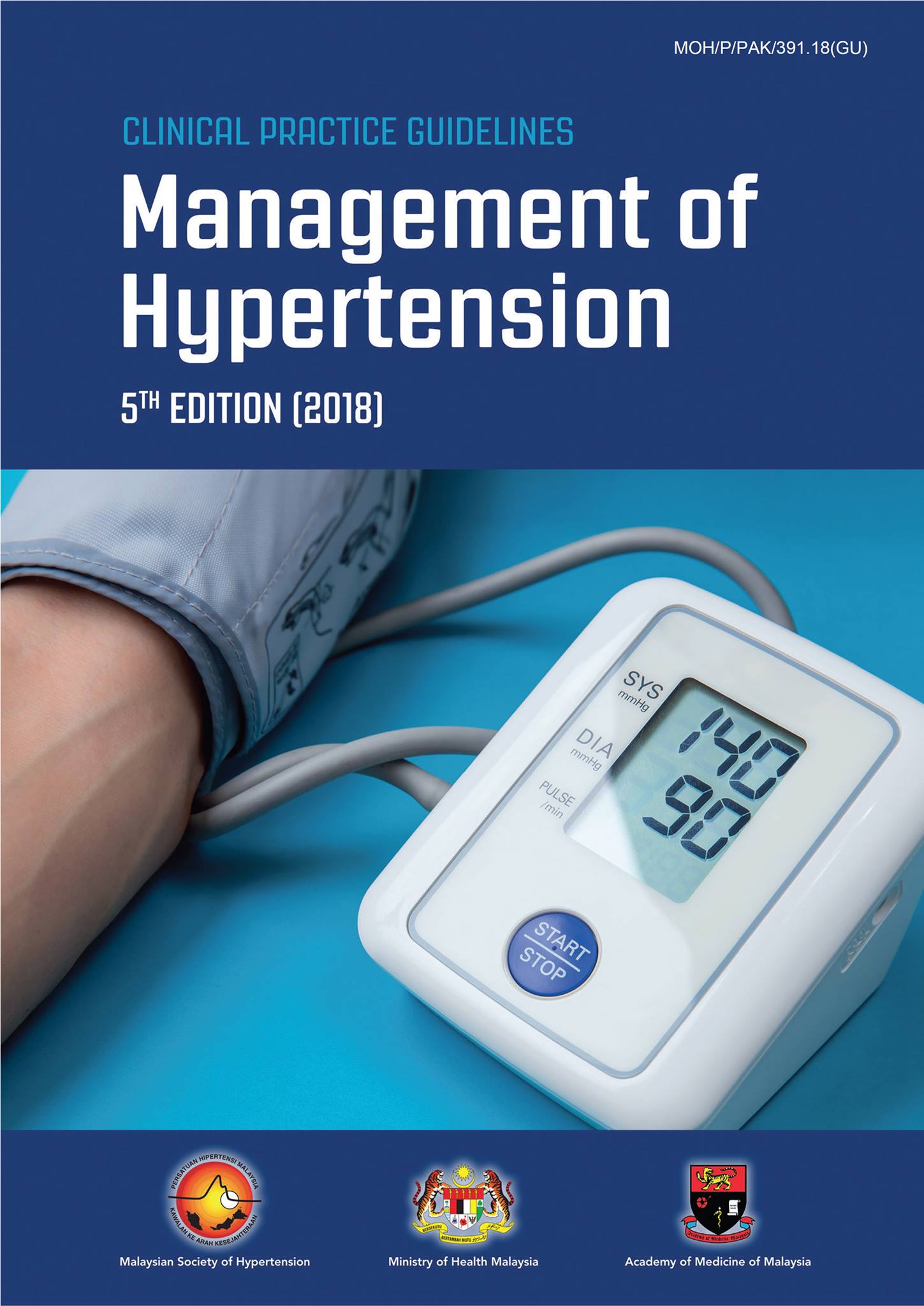2018 Management of Hypertension (5th Edition)

At the Malaysian Society of Hypertension’s (MSH) 15th Annual Scientific Meeting, Professor Abdul Rashid Abdul Rahman, the Chairman Working Group on 5th Malaysian Hypertension Clinical Practice Guidelines (CPG) 2018 said that many updates can be expected from the new CPG. One of these new recommendations is the preference for validated electronic blood pressure (BP) sets over mercury sphygmomanometers. Additionally, a new risk category of ‘intermediate’ is introduced for risk stratification for major cardiovascular events in 10 years.
The 5th Malaysian Hypertension CPG was revised based on the CPG Management of Hypertension 4th edition of 2013. In this update, systematic review methodology was used and the scopes covered include epidemiology and public health, definition and classification, blood pressure management, diagnostic criteria, investigations, global cardiovascular risk evaluation, the general principle of management, non-pharmacological and pharmacological management, management of patient subgroups and approach to resistant and refractory hypertension. Emerging areas in hypertension are also covered including Health Economics, Device Based treatment and scope for future research. The CPG that was submitted to the Ministry of Health and the CPG Council earlier in this year is now available for download. In the CPG, several KEY MESSAGES are pointed as well:
- Hypertension is defined as persistent elevation of systolic BP of 140mmHg or greater and/or diastolic BP of 90 mmHg or greater.
- The prevalence of hypertension in Malaysians aged 18 years and above was 35.3% in 2015, a slight increase from 33.6% in 2011.
- Hypertension is a silent disease; unfortunately, in 2015, for every two diagnosed patients in Malaysia, there are 3 undiagnosed patients. This has not changed since 2011. Blood pressure should be measured at every chance encounter.
- Untreated or sub-optimally controlled hypertension leads to increased cardiovascular, cerebrovascular and renal morbidity/ mortality and overall mortality.
- A systolic BP of 120 to 139 and/or diastolic BP of 85 to 89 mmHg is defined as ‘at risk blood pressure’ and should be treated in certain high-risk groups.
- Healthy living should be recommended for all individuals with hypertension and ‘at risk blood pressure’
- Decisions on pharmacological treatment should be based on global vascular risks and not on the level of blood pressure per se.
- In patients with newly diagnosed uncomplicated hypertension and no compelling indications, choice of first-line monotherapy includes ACEIs, ARBs, CCBs, diuretics and beta blockers.
- Only 44.6% of Malaysian patients achieved blood pressure control (<140/90 mmHg) while on treatment. Although this is an improvement from 2011 (34.7%) every effort should be made to achieve target blood pressure in all patients. Target blood pressure depends on specific patient groups.
- Combination therapy is often required to achieve the target and may be instituted early in patients with stage II hypertension and in high-risk stage I hypertension.
- A patient whose BP is not controlled on three or more drugs (including a diuretic) is by definition having resistant hypertension.













